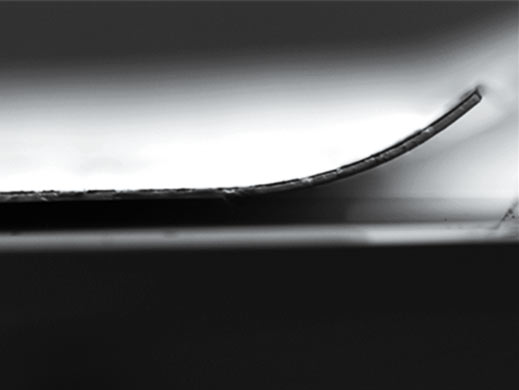Materials that are firmly bonded together with epoxy or other tough adhesives are ubiquitous in modern life—from crowns on teeth to modern composites used in construction. Yet it has proved remarkably difficult to study how these bonds fracture and fail, and how to make them more resistant to such failures.

Now MIT researchers led by Oral Buyukozturk and Markus Buehler, professors of civil and environmental engineering, have found a way to study these bonding failures directly, revealing the crucial role of moisture. Their findings were published this year in Proceedings of the National Academy of Sciences.
A composite material “may be made of a strong and durable material bonded to another strong and durable material,” Buyukozturk says, “but where you bond them doesn’t necessarily have to be strong and durable.”
There are standard methods for testing the strength of materials and investigating how they may fail structurally, but bonded surfaces are more difficult to model. “When we are concerned with deterioration of this interface when it is degraded by moisture, classical methods can’t handle that,” Buyukozturk says. “The way to approach it is to look at the molecular level.”
When such systems are exposed to moisture, “it initiates new molecules at the interface,” he says, “and that interferes with the bonding mechanism.” To assess how weak the interface becomes when it is affected by environmental exposure, the team used a combination of molecular simulations and laboratory tests. In the lab tests, Buyukozturk and his colleagues controlled the residual stresses in a metal layer that was bonded and then forcibly removed. “We validated the method, and showed that moisture has a degrading effect,” he says.
The findings could lead to new ways of preventing moisture from reaching into the bonded layer, perhaps using better sealants. This could prove useful for mechanical devices and aircraft as well as in biomedicine and construction. “Moisture is the number one enemy,” Buyukozturk says.
“I think this is going to be an important step toward assessment of the bonding, and enable us to design more durable composites,” he adds. “It gives a quantitative knowledge of the interface.”
Keep Reading
Most Popular
Large language models can do jaw-dropping things. But nobody knows exactly why.
And that's a problem. Figuring it out is one of the biggest scientific puzzles of our time and a crucial step towards controlling more powerful future models.
How scientists traced a mysterious covid case back to six toilets
When wastewater surveillance turns into a hunt for a single infected individual, the ethics get tricky.
The problem with plug-in hybrids? Their drivers.
Plug-in hybrids are often sold as a transition to EVs, but new data from Europe shows we’re still underestimating the emissions they produce.
Stay connected
Get the latest updates from
MIT Technology Review
Discover special offers, top stories, upcoming events, and more.